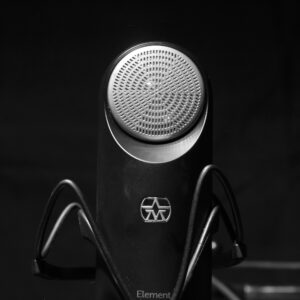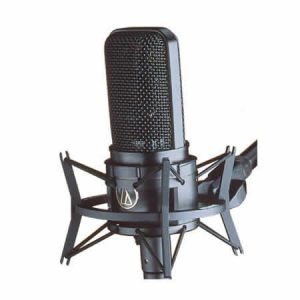 When I began my voice over journey it seemed like having a “nice voice” would take you quite a long way. You also didn’t need to know much about marketing or to have the skills of an audio producer or recording engineer.
When I began my voice over journey it seemed like having a “nice voice” would take you quite a long way. You also didn’t need to know much about marketing or to have the skills of an audio producer or recording engineer.
Back then I did not have my own studio so when I did directed sessions I either went to the studio of the client or the one they had hired. If I did ISDN sessions these were in a studio at a radio station where I’d struck a deal that allowed me to use their ISDN set up.
I’ve had my own studio for quite a while now of course and if you are starting out in voice work today you really do need your own studio. However “home studio” as a term can cover quite a wide range of set ups.
The pandemic also seems to have switched some production people on to the idea of using remote studios much more – perhaps with Source Connect, ipDTL or Clean Feed. Furthermore the expectation of what the remote studio might be able to achieve technically has increased too.
A recent on-line forum discussion I saw was about whether a request for “-70dB for room tone” was reasonable or achievable in a home studio. Room tone is a term mostly used in audiobook production and refers to the “silence” of the studio ie what you’d get if you recorded when the studio live room is empty but everything else is set up exactly is it was for recording the voice talent. The ACX technical requirement specified for audio books submitted to Audible is for a room tone of -60dB with -23 to -18 RMS and a peak of -3dB. The peak level is the measure of the loudest signal from the voice.
Another term for room tone is noise floor – when you record your “silence” the microphone will pick up anything making noise in the space – or even from outside the space if your booth is not soundproof (nearly all are not) – so things like distant traffic rumble or aeroplanes overhead, lawn mowers or dogs barking.
A room tone or noise floor of -60dB may be achievable in many booths if they are situated in quiet neighbourhoods but you’d need to carefully scrutinise the audio for all the possible sonic incursions already mentioned.
 In the forum discussion some thought -70dB might be achievable in a home studio with peaks of -3dB but personally I would have my doubts about that. When you record your room tone file the noises picked up in the booth are only one element – there will also be electrical noise introduced from the microphone, cables and preamp and anything else you run your signal though on the way to your recording device. For me there is big difference between my original microphone – an Audio Technica AT4033 – and the microphone I use now – a Neumann U87Ai. There is considerably more noise – a kind of white noise hiss – from the Audio Technica. In most booths a Neumann would give you less electrical noise but – due to its greater sensitivity – would also pick up much more of any ambient noise heard in the recording room.
In the forum discussion some thought -70dB might be achievable in a home studio with peaks of -3dB but personally I would have my doubts about that. When you record your room tone file the noises picked up in the booth are only one element – there will also be electrical noise introduced from the microphone, cables and preamp and anything else you run your signal though on the way to your recording device. For me there is big difference between my original microphone – an Audio Technica AT4033 – and the microphone I use now – a Neumann U87Ai. There is considerably more noise – a kind of white noise hiss – from the Audio Technica. In most booths a Neumann would give you less electrical noise but – due to its greater sensitivity – would also pick up much more of any ambient noise heard in the recording room.
So my feeling is that most voice talent with home studios using many of the booths currently on the market even with a reasonable mic would be unable to meet that -70dB technical specification. My Esmono booth lives in my basement and that location gives considerable isolation – if I just had the booth in an ordinary room then there is no way I’d be able to meet that -70dB spec either. But as it is – underground with thick walls around it – I can achieve -60dB without a problem and just about -70dB. However for the latter I do have to utilise a bass roll off on the mixing desk to attenuate everything below 100Hz. Being in a town means the sub bass from traffic is hard to avoid.
When I started out as a voice over someone else took care of these kinds of technical aspects – I just read the script – today you need to be able to handle the audio production elements like editing, mixing and mastering as well as the vocal delivery. You need to understand a client tech spec if one is provided and know what “peak level”, “room tone” “noise floor” and “RMS” mean and cope with a situation where it’s apparently now deemed acceptable to request pro studio specs from home set ups.
The forum question asked if -70dB room tone was achievable in a home studio – I think for most voice artists with a typical booth it is not. Then again I’ve only ever encountered a tech spec when recording audio books so if you don’t voice audio books, and there are no complaints about your audio quality from your clients, then this is perhaps not that much of a problem.
Chris Radley – Voice Over